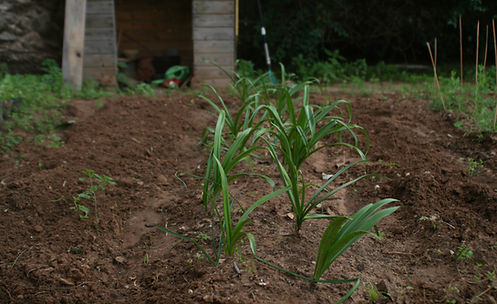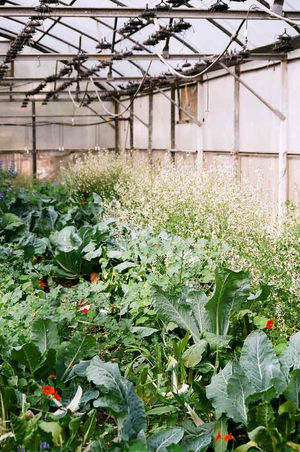FOREST CHEMICAL ECOLOGY LAB
UNIVERSITY OF WISCONSIN-MADISON

Understanding tree responses to a changing world
We take an integrative approach to identifying mechanisms by which climate alters the tree metabolome, and in turn, species interactions and ecosystem function. We couple field and greenhouse studies and employ a range of physiological and chemical techniques to address process-based ecological questions across diverse forest systems.
Our lab is in the Department of Forest & Wildlife Ecology in the College of Agricultural and Life Sciences at The University of Wisconsin in stunning Madison, Wisconsin.
RESEARCH
Broadly, we are interested in better understanding the interactive effects of environmental and biotic factors in shaping plant defensive strategies. Our long-term goal is to identify and characterize how varying climate factors shift a plant's metabolic priorities and alter resistance. You can read on to find out more about specific projects below.


CARBON ALLOCATION TO PLANT CHEMICAL DEFENSE IN RESPONSE TO DROUGHT
While we know that severe or prolonged drought eventually reduces chemical defenses, the point at which resources begin to constrain defense and how this interacts with primary metabolism is unknown. By quantifying the interaction between chemical defense, non-structural carbohydrates, and primary metabolism under varying levels of drought stress we can gain a more comprehensive understanding of the processes underlying widespread drought-induced tree mortality.
To this end we are testing classical plant defense hypotheses as they relate to drought stress physiology. As part of a collaborative NSF project, we are employing both field and greenhouse approaches to track changes in non-structural carbohydrates, gas exchange, and plant volatile and tissue chemistry along a drought continuum. By coupling stable isotopes with RNAseq, we hope to identify drought-induced mechanisms driving chemical defenses from both a carbon and gene expression perspective.



TRADE-OFFS BETWEEN PLANT GROWTH AND DEFENSE
Plants are constrained by limiting resources and defenses come at a cost, namely of other critical processes, such as growth and reproduction. We still have only a very limited understanding of the causal drivers of such trade-offs including the importance of particular selections pressures, such as herbivory or competition. Addressing the underlying mechanisms driving observable trade-offs is essential for understanding how plants "decide" to allocate their resources under various environmental conditions. This work can be critical to improving breeding programs and has large-scale economic effects for both ecology and industry.
We are using genotype comparisons within populations of conifers to assess constitutive and induced chemistry as it relates to inherent growth rates and other defense metrics (i.e. resin ducts). We are also assessing how these trade-offs may vary under different levels of drought, in response to various management practices, and different regional climate regimes.


MYCORRHIZAL SIGNALING AND PLANT DEFENSE
Plant symbionts, such as mycorrhizae, can enhance plant fitness through a variety of different mechanisms including enhanced nutrient acquisition and increased tolerance against pests, pathogens, and abiotic stress. Plants are also very perceptive and can eavesdrop on volatiles released by herbivore-damaged neighbors and prime their own defenses beforehand. Research in a limited number of plant systems suggests that defense-inducing signals can be transported to uninfested neighbors via belowground hyphal networks. We are currently investigating whether this phenomenon occurs in cereal crops (wheat and barley) and are looking to expand the mechanistic portion of this work by collaborating with other labs who have the facilities and prior experience to investigate this project further.
SOIL LEGACY EFFECTS ON VOLATILE PRODUCTION IN WHEAT
Cover and pulse crops affect the composition of soil microbial communities, which in turn, can alter plant growth and defense. One way that soil microbes influence plant defense is through the priming and production of plant volatile organic compounds (VOCs). The resulting volatile profiles can then alter the efficacy of the plant’s direct and indirect defenses. In addition, environmental factors can influence plant root exudates released into the soil, which can also cause shifts in soil microbial community composition. However, the relationship between the diversity of the microorganisms and the magnitude and directionality of the above and belowground volatile profiles remains unclear.
As part of a multi-disciplinary USDA-NIFA project, we are currently investigating how climate, cover crops, and livestock grazing affect the soil microbiota, and in turn, how these soil “legacy effects” impact the above and belowground volatile organic compounds (VOCs) produced by wheat in the subsequent year. We are particularly interested in how these volatiles impact the preference of the wheat stem sawfly and how legacy effects influence herbivore-induced host location cues used by its natural enemies.
THINKING ABOUT JOINING THE LAB?
That's awesome! Please fill out this contact form or email me directly if you have any questions or want to learn more about opportunities.
Department of Entomology
1630 Linden Drive
646 Russell Labs
Madison, WI 53706
608.263.4520






